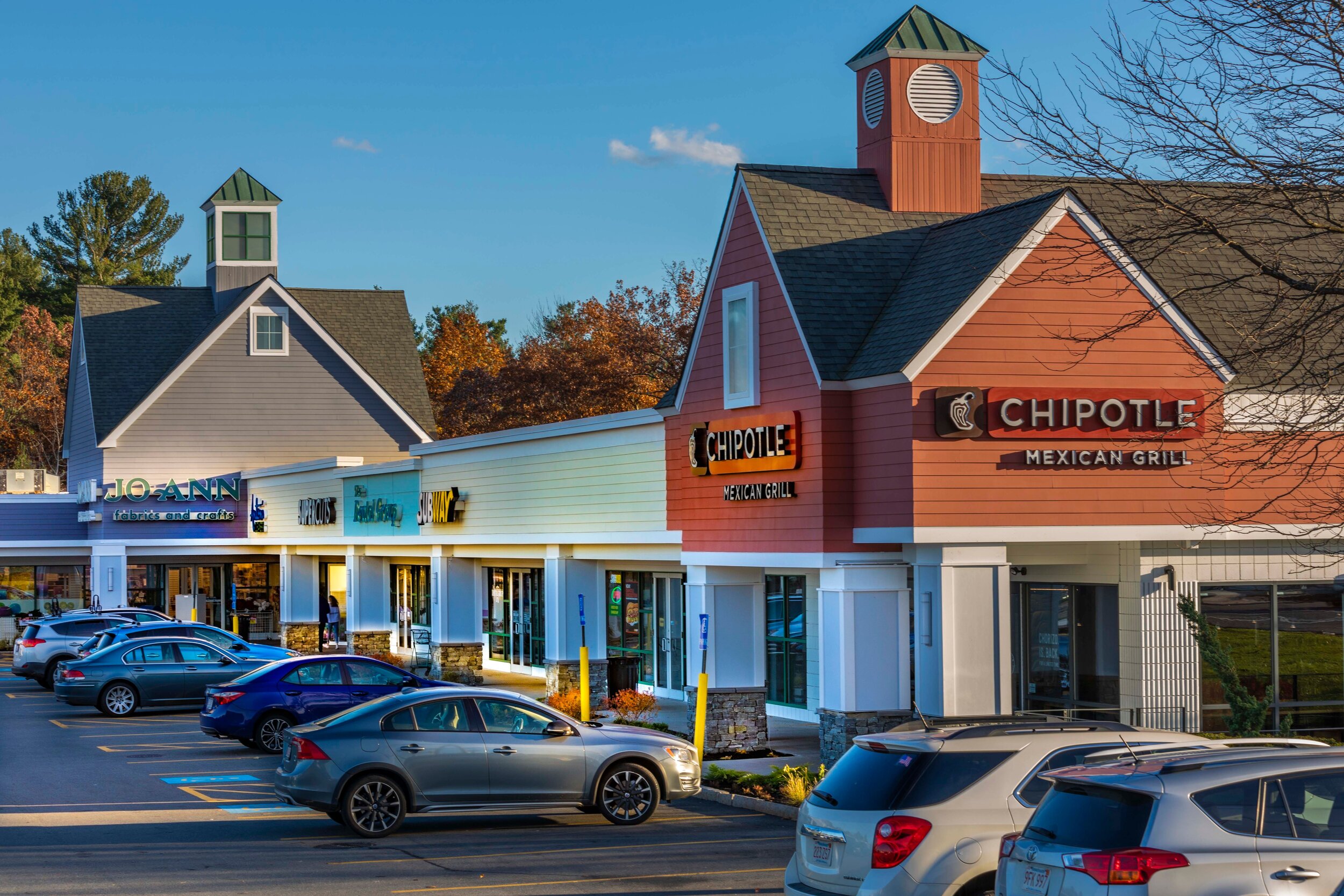Form + Place Blog – April 2021
The last year has undoubtedly caused fundamental changes to our collective human psyche, and this will surely be manifest in our built environment, and the ways in which we recreate and socialize in public places. Form + Place and Wilder have collaborated for years to shape retail and mixed use environments by utilizing strategies ranging from architectural facelifts, to placemaking, to unlocking potential through rezoning. Given your expertise in the many facets of retail development, we thought it would be illuminating to discuss how the Pandemic will likely impact a variety of retail venues.
F+P: After a year of relying primarily on online retail transactions, what do you think will draw people back to the public realm?
AL: With the supply of vaccinations becoming more readily available here in the US, we are already experiencing people coming out in droves. Confidence in being vaccinated combined with warmer weather and overwhelming pent-up demand is resulting in on-site traffic going up exponentially. According to our Placer.ai tracking, restaurant sales this March spiked to early March 2019 levels.
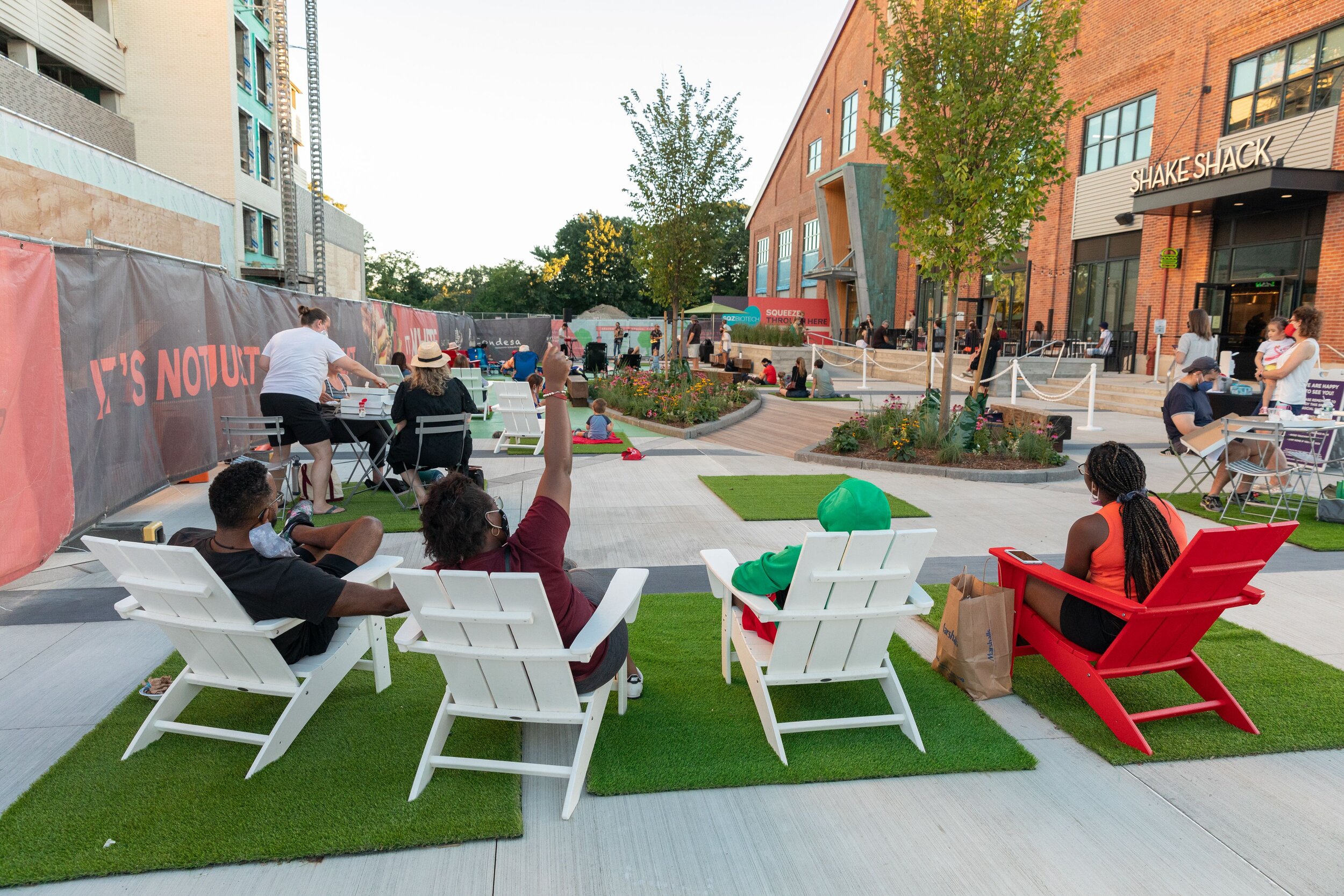
SOCIALLY DISTANCED CONCERT AT ARSENAL YARDS
F+P: What assets will brick-and-mortar retailers need to possess to lure customers back in person?
AL: This is a great question. It is an undisputed fact that this Pandemic has forever changed people’s shopping habits. As mentioned above, pent-up demand is its own driver, but where people go and what they do is based on feeling confident about the safety of the venue. Most people (Miami spring-breakers aside) want to see and know that Covid safety protocols are still being observed and enforced.
Everyone has read about the acceleration of eCommerce and its effect on brick-and-mortar. Retail, restaurants, and traditional shopping centers are reinventing themselves to stay relevant to a new generation of families and professionals. Merchandise mix is especially important post-Pandemic. Destination services not available from the internet will be huge traffic drivers. Even pre-Pandemic, we were working across our portfolio to add fitness, spa/wellness, medical/dental and urgent care. Shopping centers are continually being refreshed with pop-up stores, special events, and community offerings. Today’s experience is being reengineered to offer social engagements that were sorely missed over the past year, while satisfying the ever-growing demand for convenience and accessibility that we became accustomed to during lockdown.
F+P: We have found that placemaking features can greatly enhance retail centers. What special changes do you expect consumers will be looking for in public open spaces?
AL: The reality of starting to gather again in public spaces is so heartening! Long before the Pandemic, we, and our partner Boylston Properties, started the redevelopment of the old Arsenal Mall in Watertown, MA into Arsenal Yards. Form + Place was essential in laying the groundwork for this project by working with us and the town to craft a new Regional Mixed-Use District. What started as a retail renovation, ended up with a greatly expanded vision. Today it is a mixed-use development of retail, restaurants, entertainment, services, lab/life-science office space, contemporary apartments, and a 150-room hotel. All eateries and our full-service grocery store, Roche Bros., include outside dining patios as part of their buildouts. A pre-Pandemic priority in the redevelopment was to integrate eclectic experiences, original public works, and outside gathering spaces both within the project and in the 19-acre adjacent, town-owned park. As a result of the last year, we have increased outdoor eating places, added custom oversized murals, and arranged for concerts, street musicians, and fire pits with comfortable chairs and blankets. All events were executed in well laid out and distanced circles, with an easy-to-use free registration system that helped manage gathering limits. Our customer response was overwhelmingly positive, and we will continue to offer innovative programming, such as the (already maxed-out) summer fitness classes and a picnic series. Additionally, with public park use in high demand, we continue our work with the town of Watertown to reimage the adjacent park and reconnect the area with the Charles River. Plans include creating easy pedestrian access from Arenal Yards, a concert pavilion, community garden, fitness area, enhanced playground, basketball/tennis/pickleball courts, a mixed-use path to the river, river-view corridors, and more. Phase one, including the concert pavilion, is set to open this year.
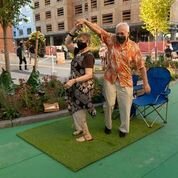
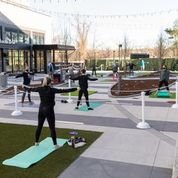
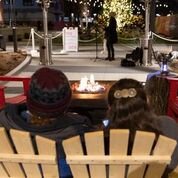
And it’s not just lifestyle centers that benefit from thoughtful placemaking. Grocery anchored centers, such as Westford Valley Marketplace, our Whole Foods Market-anchored center in Westford, MA, – another collaboration with Form + Place – can become compelling neighborhood centers. In this recently completed renovation, your thoughtful design of the public realm, combined with a high-quality architectural redesign, enhances the everyday shopping trip by emphasizing the pedestrian experience and creating great flexible outdoor spaces, with clear signage, storefronts, and better distributed parking areas. Residents and area office workers enjoy having an easy, convenient place to go not only for services, but also to gather for shared social experiences.
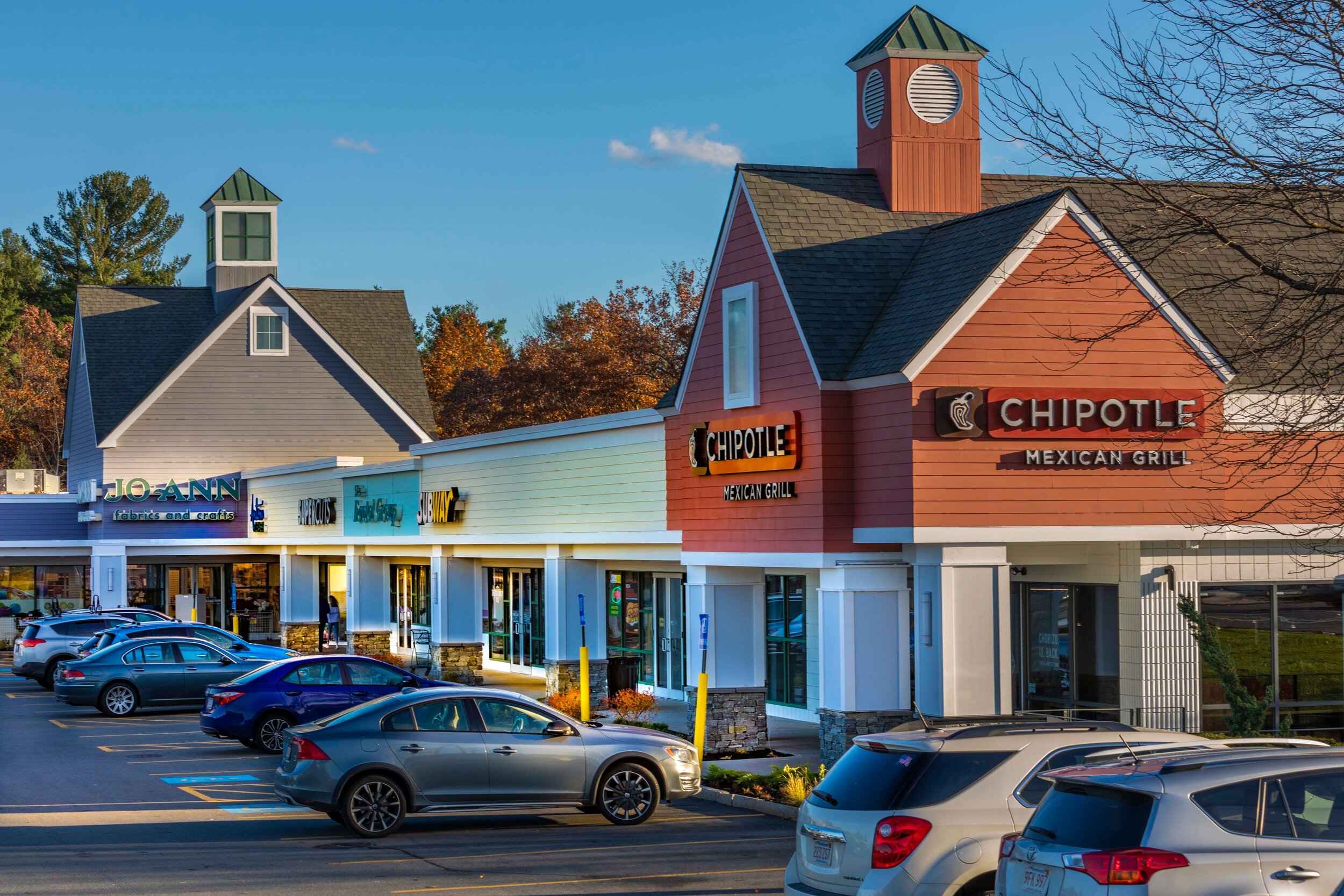
WESTFORD VALLEY MARKETPLACE RENOVATION
F+P: The adaptive use of reclaiming parking spaces for outdoor dining and similar other social opportunities has been an exciting biproduct of the Pandemic. Do you expect this trend will continue? And if so, how do you anticipate landlords and restaurants will accommodate the increased desire for outdoor dining?
AL: The past year has made us all so creative! From parking lot dining, expanded sidewalk cafes, and additional universal sitting areas to accommodate takeout, to personal igloos for private dining, people have been very receptive and adaptive. We see this continuing for several reasons; people still want safety protocols, they enjoy being outside in the fresh air, and the positive vibe is invigorating. Challenges could arise from people wanting to again use parking areas, impactful lease restrictions limiting opportunities, and if municipalities stymie approvals.
Transportation is changing, and the rise of ridesharing apps has helped take pressure off parking lots, particularly when we can incorporate designated drop-off and pick-up areas. Contemporary merchandise mixes are positively impacting parking ratios, and strategic reviews of parking lot layouts can increase efficiency, resulting in the creative reuse of parking lots.
Working through lease restrictions and getting lifts can be demanding. Older leases were not written to accommodate the momentous shifts and accelerated demands that we have experienced over the last 18 months. Our leasing team spends much of their time working through restrictions that inhibit outdoor space use, including extending dining areas and selling space. We are finding, however, that retailers do understand the need to keep centers vibrant, relevant, and successful, so solutions arise, albeit one lease at a time.

CURBSIDE PICK-UP
Finally, town approval for the above changes to traditional shopping and dining experiences must be secured. Two years ago, most requests for additional outdoor activations would not have been heard. Perhaps one of the few Pandemic positives has been the willingness of forward-thinking town officials to pivot under dire circumstances to support retail and restaurants with creative problem solving. We hope that with the success of these initiatives (and no detrimental impact to fire or life safety) this trend will continue.

OUTDOOR DINING OPTIONS AT ARSENAL YARDS AND WAYSIDE
F+P: We recall when the concept of sipping an espresso beverage while shopping for groceries was novel and appealing, particularly for sleep-deprived parents with young children in tow. These days grocery shopping is more of an expedited experience. Can you speak to changes that you imagine will continue to arise in the realm of grocery shopping? How can grocers compete with the likes of InstaCart and curbside pickup?
AL: The impact of the Pandemic on the entire grocery business will be long lasting, and the surge of online grocery sales has ignited change. But this does not foretell the demise of brick-and-mortar grocers, as we believe there is a place for both to be successful. Daily online sales spiked with virus surges, and dipped once fears subsided, indicating shoppers’ ongoing desire for the in-store experience. Our new normal will most likely see the continuing trend of eating in more often, meaning more money will be spent on groceries. The numbers show that store trips may be fewer, but per-cart sales are up, a reflection of lingering fears of possible shortages.
Adaptations and innovations that were already underway in the pre-Covid days are accelerating; stores that were opening at 70,000 sf are now downsizing to 40,000 sf. The recently opened Roche Bros. at Arsenal Yards originally requested 45,000 sf, but with the creative solution of incorporating an 8,000 sf mezzanine, they settled on a 32,000 sf footprint. We have worked with our grocers, portfolio-wide, to update and better address consumer needs with allocations supporting remodels, pick-up areas, and short-term driver spaces. Grocers, in turn, have boosted consumer confidence with rigorous sanitation and easy contactless payment options. Grocery stores will stay in demand as people embrace innovations offered in today’s stores. And besides, there are plenty of shoppers who still like to pick out their own produce and fresh baked goods.
F+P: A number of our recent projects affirm the growing allure of drive-thrus, especially since the onset of Covid. Do you imagine this trend will continue?
AL: With convenience and safety as motivators, drive-thrus, like curbside pick-up, are definitely here to stay. And they are in more demand than ever. We are even getting requests from various in-line retailers, like Panera Bread and Chipotle, who would like to come out to pad sites to take advantage of the trend. We have the usual drive-thru retailers now upping their requests to feature double drive-thrus; one lane for the typical “pull-up-and-order” user, and the other for those who pre-ordered and desire an even quicker pick-up. The bigger challenge is how to accommodate these many requests in existing centers. This trend of expanded drive-thrus will allow us to revisit conversations over parking ratios with tenants and municipalities.
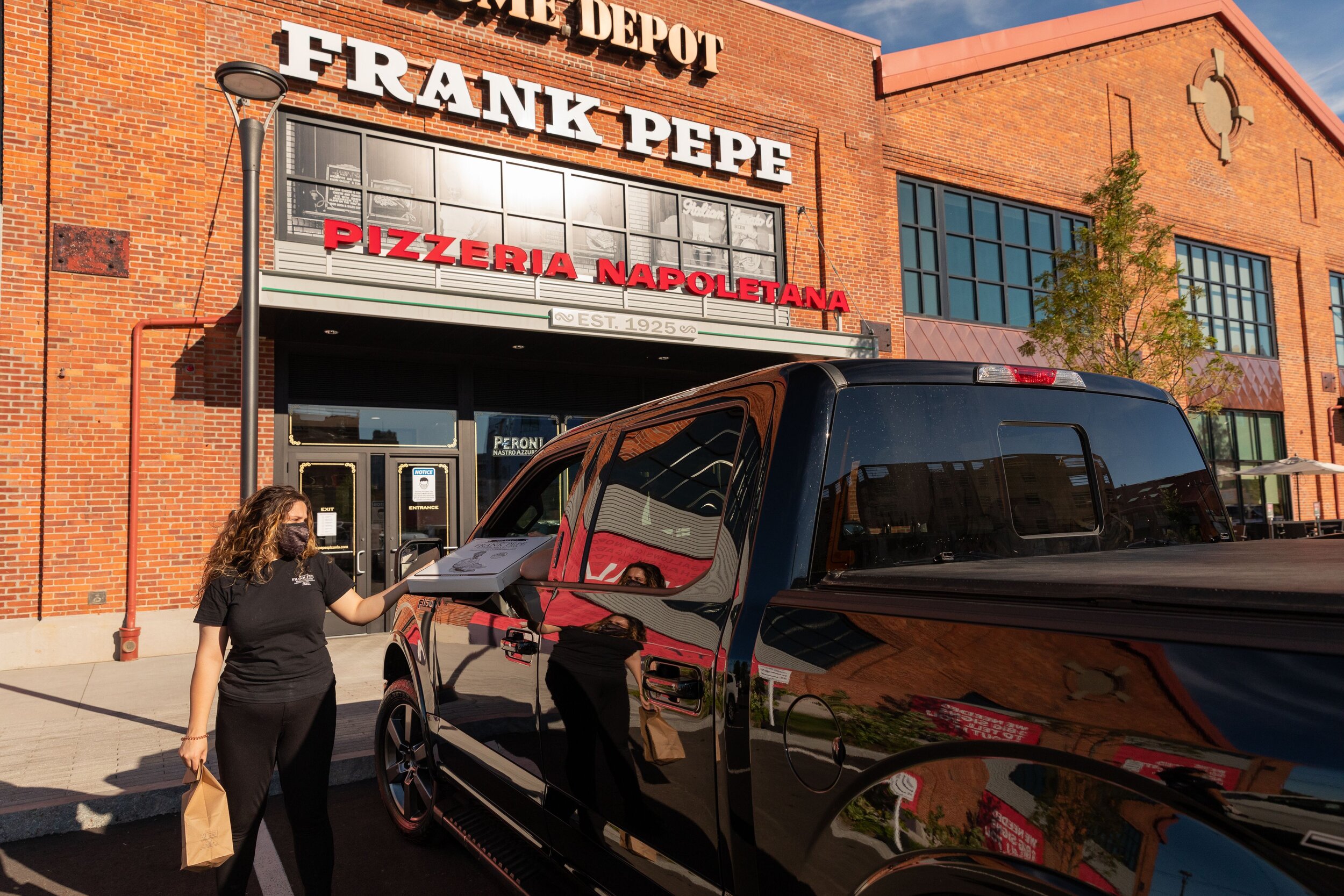
CURBSIDE PICK-UP AT ARSENAL YARDS
F+P: And finally, much of our work requires us to think creatively about revisioning anchor spaces. What are some of the solutions that you have found to be most effective? Subdivide, change use, add outdoor space, etc.?
AL: Ah, the question that gets more important with each passing year. There is no singular answer; each center, every market, and location is different, calling for its own inventive solution. At Wilder we have long appreciated the advantages of the open-air center in offering increased consumer convenience and CAM savings. In the 1990’s we made a strategic move away from traditional indoor malls, so fortunately, we have not had to deal with this issue to a large degree. Since that time, we have rebuilt our portfolio with all types of open-air centers and urban and urban-edge developments.
We have, however, encountered some large vacancies as a result of big box bankruptcies or, as in the case of Dedham Mall (don’t let the name fool you, it is truly an outdoor center), where a Sears and an adjacent Toys“R”Us went out almost simultaneously, leaving 170,000 sf of first-level space and 41,000 sf of second-level space vacant. Our solution was to break-up and remerchandise the space. Today, At Home, and Burlington are thriving there, and Ashbrook Furniture will be opening soon, as well as a soon-to-be announced electric vehicle company that will be joining the mix. Hence, four new stores will soon occupy the space where the two old-time retailers once did business.
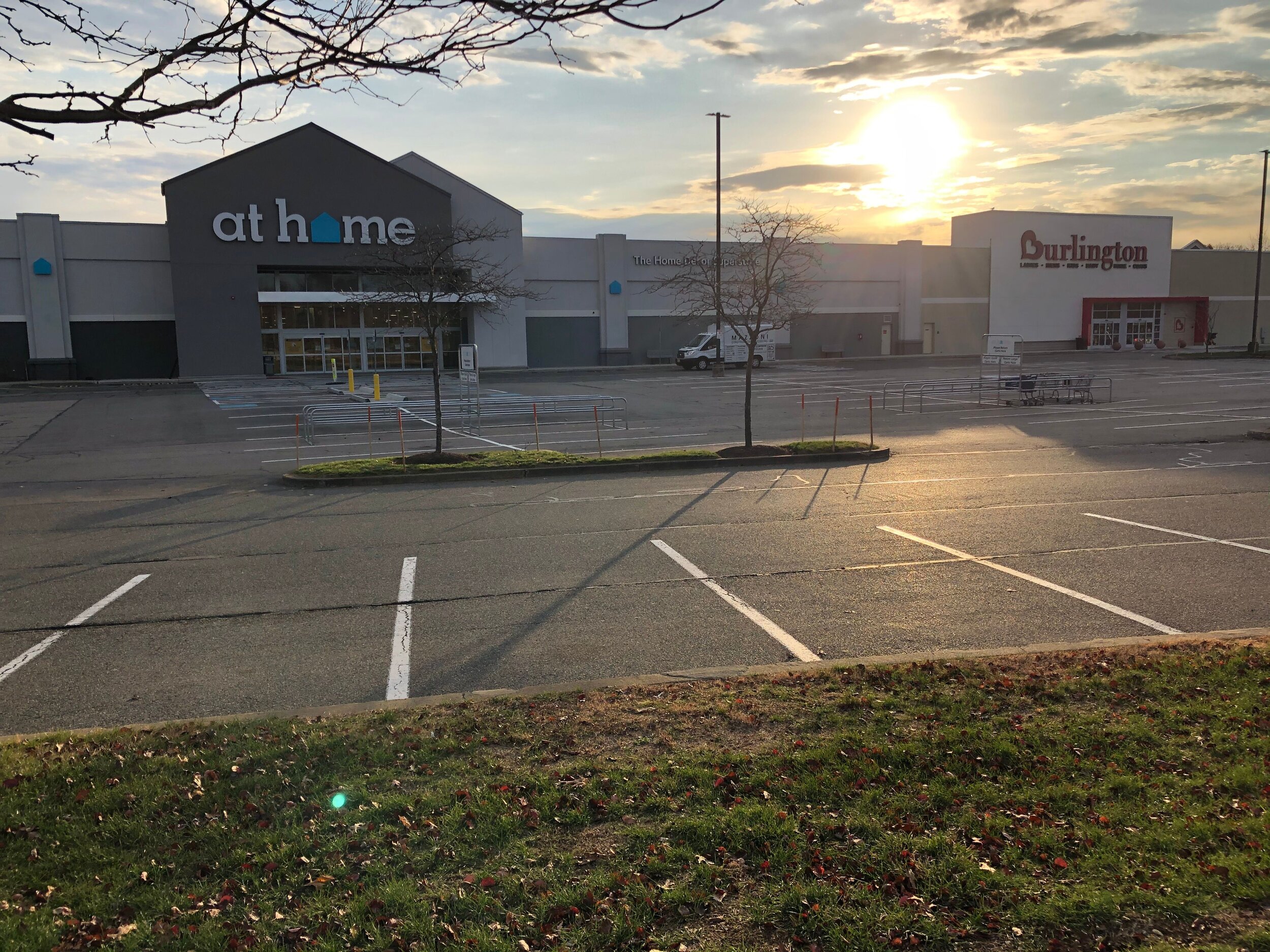
DEDHAM MALL REMERCHANDISING
Thank you for these insights. We look forward to continuing to explore these ever-evolving retail-driven environments. And while Covid has clearly expedited certain trends, the overarching desire for social interaction, facilitated by creative placemaking, looks as though it will remain front and center.



